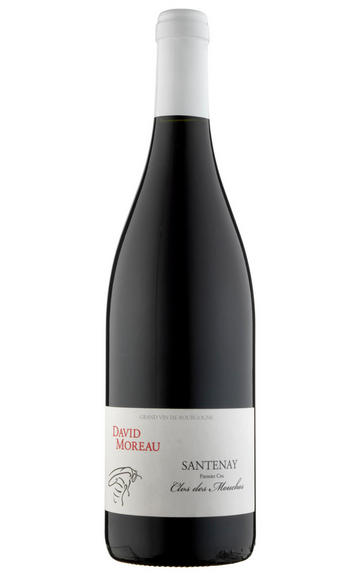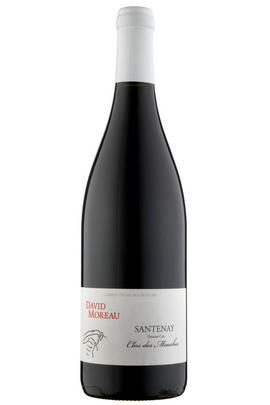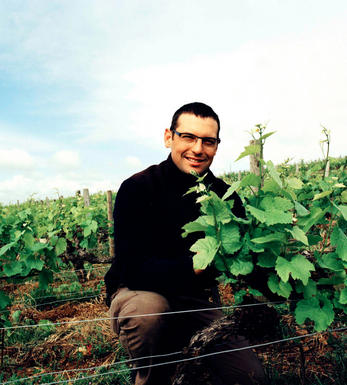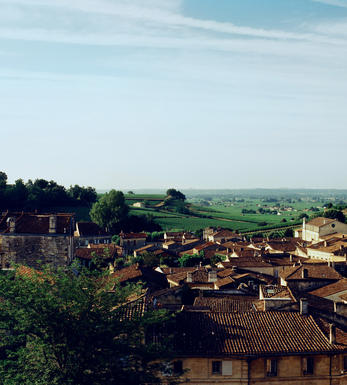
2016 Santenay, Clos des Mouches, 1er Cru, David Moreau, Burgundy

Critics reviews
Neal Martin - 29/12/2017
About this WINE

David Moreau
David Moreau has taken over part of his octogenerian grandfather’s wine domaine in Santenay in Côte de Beaune, beginning with the 2009 vintage. Prior to that David has worked with Olivier Lamy and Domaine de la Romanée Conti, as well as doing a stage in New Zealand at Neudorf.
David is beginning with 5 of the family’s 9 hectares and suffice to say that significant changes in both viticulture and vinification have been made compared to the ancien regime. The vineyards were almost all planted in the 1960s, so David has old vines to work with. They are mostly pruned by cordon royat to minimise vigour, and the land is either ploughed or left with grass depending on the circumstance of a given plot.

Santenay
Santenay, situated in the southern part of the Côte de Beaune in Burgundy, France, is known for producing some of the world’s most prestigious and sought-after wines. The terroir of Santenay is diverse, featuring limestone and clay soils, which play a crucial role in shaping the unique character and flavours of the wines.
The region’s winemaking heritage dates back centuries, with a deep-rooted tradition of crafting exceptional Pinot Noir and Chardonnay wines. The village’s vineyards benefit from a favourable microclimate that promotes grape ripening while retaining freshness and balance in the wines.
The red wines often exhibit a harmonious blend of red fruit flavours, such as cherry and raspberry, and subtle earthy and spice undertones. The tannins in these wines are typically refined and well-integrated, contributing to their elegance and age-worthiness.
On the other hand, Santenay’s white wines are characterised by their bright acidity, offering refreshing citrus and orchard fruit notes with a hint of minerality.
Winemakers in Santenay take pride in following a traditional and artisanal approach to winemaking, emphasising the importance of respecting the land and expressing the unique terroir in each bottle. They aim to capture the essence of the vineyards and the nuances of the grape varieties, resulting in authentic wines that reflect their origin.
Santenay’s picturesque landscapes and dedication to producing high-quality wines attract wine enthusiasts and connoisseurs worldwide. It is a region where history, tradition, and innovation intersect, making it a compelling destination for anyone seeking to explore Burgundy’s exceptional wines and winemaking culture.

Pinot Noir
Pinot Noir is probably the most frustrating, and at times infuriating, wine grape in the world. However when it is successful, it can produce some of the most sublime wines known to man. This thin-skinned grape which grows in small, tight bunches performs well on well-drained, deepish limestone based subsoils as are found on Burgundy's Côte d'Or.
Pinot Noir is more susceptible than other varieties to over cropping - concentration and varietal character disappear rapidly if yields are excessive and yields as little as 25hl/ha are the norm for some climats of the Côte d`Or.
Because of the thinness of the skins, Pinot Noir wines are lighter in colour, body and tannins. However the best wines have grip, complexity and an intensity of fruit seldom found in wine from other grapes. Young Pinot Noir can smell almost sweet, redolent with freshly crushed raspberries, cherries and redcurrants. When mature, the best wines develop a sensuous, silky mouth feel with the fruit flavours deepening and gamey "sous-bois" nuances emerging.
The best examples are still found in Burgundy, although Pinot Noir`s key role in Champagne should not be forgotten. It is grown throughout the world with notable success in the Carneros and Russian River Valley districts of California, and the Martinborough and Central Otago regions of New Zealand.


Buying options
Add to wishlist
Description
Our other Premier Cru from David is selected as a contrast to the aesthetic lines of the Clos Rousseau. Grown on a 0.8-hectare plot, the initial impressions are of floral and red fruit perfumes, yet the palate is transformed by a delicious and mouth-watering minerality, entwined with ribbons of sweet cherry. The vineyard was wasteland until the 1960s, the last to be planted due to the challenges of farming the site. David’s grandfather saw its potential and so this wine has a place close to his heart. Drink 2020-2027.
Adam Bruntlett, Burgundy Buyer
David Moreau took over part of his octogenerian grandfather’s domaine in Santenay in 2009. Prior to that, he worked with Olivier Lamy, Domaine de la RomanéeConti, and at Neudorf in New Zealand. David now has seven hectares in production and has made significant changes in both viticulture and vinification. The vineyards were almost all planted in the 1960s, so David has old vines to work with. He will soon become president of the local vine-growers syndicat a measure of the regard in which he is held. Once again, David is very happy with this year’s results. There was very little frost damage this far south and all his wines performed well in our barrel tastings. There is a confidence in David’s winemaking that raises expectations for some outperforming wines from this lesser-known part of Burgundy. The purity and transparency of 2016 suits his range very well.
wine at a glance
Delivery and quality guarantee